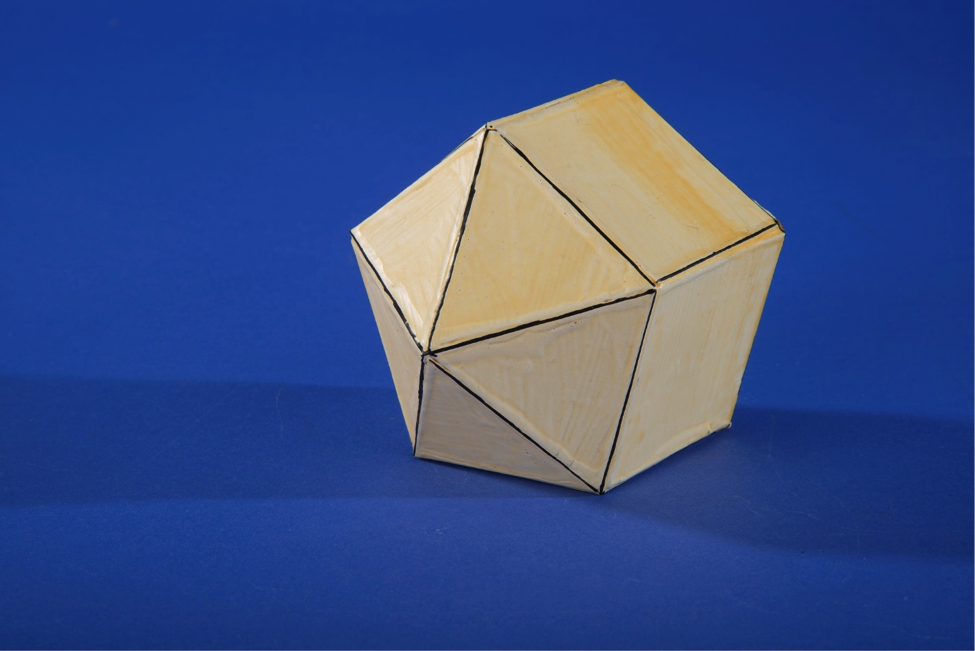- About MAA
- Membership
- MAA Publications
- Periodicals
- Blogs
- MAA Book Series
- MAA Press (an imprint of the AMS)
- MAA Notes
- MAA Reviews
- Mathematical Communication
- Information for Libraries
- Author Resources
- Advertise with MAA
- Meetings
- Competitions
- Programs
- Communities
- MAA Sections
- SIGMAA
- MAA Connect
- Students
- MAA Awards
- Awards Booklets
- Writing Awards
- Teaching Awards
- Service Awards
- Research Awards
- Lecture Awards
- Putnam Competition Individual and Team Winners
- D. E. Shaw Group AMC 8 Awards & Certificates
- Maryam Mirzakhani AMC 10 A Awards & Certificates
- Two Sigma AMC 10 B Awards & Certificates
- Jane Street AMC 12 A Awards & Certificates
- Akamai AMC 12 B Awards & Certificates
- High School Teachers
- News
You are here
Mathematical Treasure: Model of Elongated Pentagonal Pyramid

Model of an Elongated Pentagonal Pyramid, Smithsonian Institution negative number DOR2014-00726
In 1966, fifty years ago, the American mathematician Norman W. Johnson, a student of H.S.M. Coxeter at the University of Toronto in Canada, published an enumeration of the convex polyhedra with regular faces. These included the Platonic solids, the Archimedean solids, an infinite family of prisms with square sides, an infinite family of antiprisms with equilateral triangles as sides, and a group of other polyhedra now known as the Johnson solids. This paper model of a Johnson solid shows a pentagonal prism with a pyramid erected on one of its pentagonal faces. It was made by Michael Berman, an amateur mathematician in Pittsburgh, who also made models of other regular-faced convex polyhedra. These models are now in the collections of the National Museum of American History.
For further information and descriptions of all of Berman’s models see http://americanhistory.si.edu/collections/object-groups/geometric-models.
Peggy Kidwell (National Museum of American History, Smithsonian Institution), "Mathematical Treasure: Model of Elongated Pentagonal Pyramid," Convergence (January 2016)




